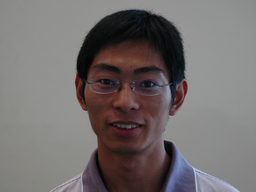Location
Physics : 401
Date & Time
November 4, 2014, 9:00 am – 11:00 am
Description
TITLE: Surface reactions during the atomic layer deposition of high-κ dielectrics on III-V semiconductor surfaces
ABSTRACT: The quality of the dielectric/semiconductor interface is one of the most critical parameters for the fabrication of high-speed and low-power-consumption III-V semiconductor based metal-oxide-semiconductor field effect transistors (MOSFETs), as it determines the device performance. This dissertation contains investigations of the deposition and interface of binary oxide films on GaAs(100) and InAs(100) surfaces aiming at understanding the removal of the surface native oxides during certain atomic layer deposition (ALD) processes. To accomplish that, two complementary experimental approaches have been used. Initially, films were deposited in a conventional ALD reactor and characterized ex situ using spectroscopic ellipsometry (SE), X-ray photoelectron spectroscopy (XPS), high-resolution transmission electron microscopy (HRTEM), and atomic force microscopy (AFM). The systems examined were Ta2O5 on GaAs(100) surfaces from pentakis(dimethylamino) tantalum (Ta(N(CH3)2)5, PDMAT) and TiO2 on GaAs(100) and InAs(100) surfaces from tetrakis(dimethylamino) titanium (Ti(N(CH3)2)4, TDMAT). For these systems, deposition at the optimal ALD temperature resulted in practically sharp interfaces. Indium oxides were found to diffuse through ~ 6 nm of TiO2 film and accumulate on the topmost film layer. For the ALD of Ta2O5 on GaAs(100) surfaces, native oxide removal was enhanced at deposition temperatures above the ALD window; for ALD of TiO2 on both GaAs(100) and InAs(100) surfaces, native oxide removal was enhanced as the deposition temperatures increased up to 250 °C, while oxidation of the interface was observed for deposition above 300 °C due to the formation of noncontinuous films. To elucidate the surface reactions occurring during the deposition, an in situ attenuated total reflectance Fourier transform infrared (ATR-FTIR) spectroscopy apparatus was constructed and used to investigate the surface reactions during the ALD of TiO2 and HfO2 on GaAs(100) surfaces. The existence of a ligand exchange mechanism was verified for both processes. Additionally, the formation of methylmethyleneimine (CH3N=CH2, MMI) was observed, indicating the existence of a beta hydride reaction pathway. Additionally, at 275 °C continuous removal of arsenic oxides was observed during the first 20 process cycles, an observation that challenges the prevailing understanding of the native oxide removal and indicates a much more complex surface chemistry.
